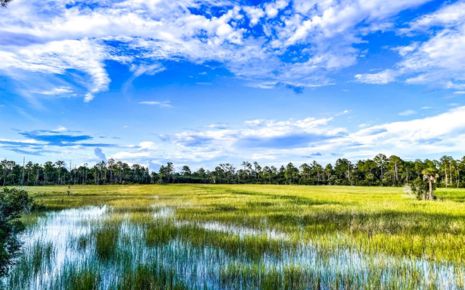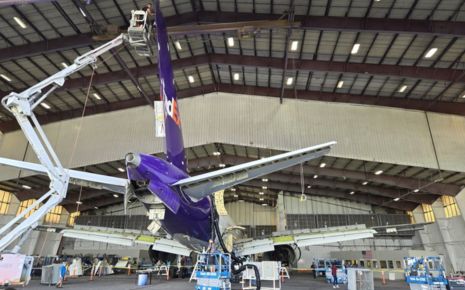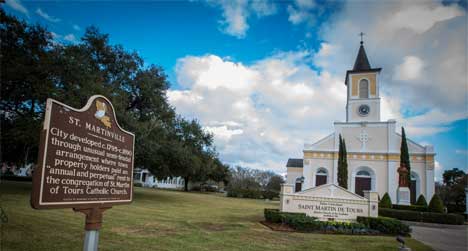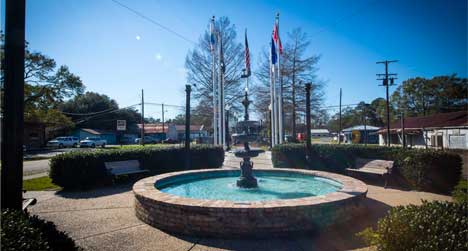How multiple Acadiana properties are benefiting from a $1.2M EPA Brownfields grant

27 Aug 2025
Latest News
A $1.2 million grant from the U.S. Environmental Protection Agency is helping the Acadiana Planning Commission plan a future for underutilized properties in four Acadiana communities. The FY2025 Brownfields Assessment Coalition Grant awarded in May is a major milestone for the region. It will help Abbeville, Eunice, Opelousas, and Ville Platte assess ways to return properties suited for rehabilitation to commerce or public use. For the APC, diligence paid off as the success followed after submitting multiple applications in prior funding rounds.
What does an assessment grant fund?
Unlike cleanup grants, the four-year Brownfields Assessment Coalition Grant is laser-focused on funding environmental site assessments and reuse planning. It focuses on the critical early steps in the remediation process and can open the door to other redevelopment funding opportunities or local economic development entities or developers.
“This is not a cleanup,” Kade Jones, Regional Planner with APC, clarified. “This grant is for assessments that will tell you how bad the contamination is.”
Jones highlighted both Phase 1 and Phase 2 assessments would be covered. Phase 1 assessments are a high-level overview noting visible environmental concerns, such as the possible presence of asbestos, lead paint, or mold. Phase 2 digs deeper and involves soil testing, paint sampling, other collections, and laboratory testing to provide hard data. With this data in hand, other possibilities start.
“You use your Phase 1 and Phase 2 results to go and find cleanup funding, or if you’re a property owner or city, cover the cleanup costs yourself,” Jones explained. “Most of the time, people are taking the assessments and going after cleanup funds to get the project completed. This grant pays for up to $1.2 million worth of assessments, and we can also use the funding for planning activities.”
The four-year grant program offers the flexibility to address properties at various stages of evaluation. Sometimes properties already have partial assessments, while others may require community engagement to map out a future.
“That’s where reuse planning comes in – visioning sessions with the public to say, ‘This is what we would like to see on this site.’ When you go after cleanup funding, they want to know the plan and how it benefits the community. The cleanup plan has to have a justifiable community benefit,” Jones shared.
High-priority sites have been identified in multiple communities: Opelousas’ historic Abdalla’s Department Store, Abbeville’s former Riviana Rice Mill, Eunice’s Hotel Mayer, and two underutilized commercial sites in Ville Platte, including the Parkview Shopping Center. Each property faces barriers to redevelopment based on actual or perceived contamination, despite having diverse histories and potential.
“A brownfield site doesn’t actually have to have contamination,” Jones noted. “It can be a perception issue. If a bank thinks there’s a problem, no development can happen. These assessments clear up those questions.”
For potential buyers, the knowledge from an assessment can also help alleviate purchase concerns as the full scope of any mold or asbestos remediation needs becomes a known factor.
Ultimately, the goal is to use the assessment and planning work to support larger redevelopment efforts and projects ready to deliver tangible community value, such as housing, green space, community centers, or public amenities.
“The overall goal is not that this is a final product,” Jones explained. “This is a step in the process. The next step is when the real remediation and redevelopment happen.”
Picking assessment locations
The selection of the four communities highlighted in the grant application was strategic and based on the likelihood of qualifying for federal funding based on several factors, including the number of potential brownfield sites. Eunice and Ville Platte already had a developed brownfield inventory through the Louisiana Department of Environmental Quality, or LDEQ, technical assistance grants. Abbeville and Opelousas were chosen due to having established sites with redevelopment potential and the ability to serve as lead partners.
The coalition pairs each target community with a lead partner. The City of Abbeville, the Opelousas Downtown Development District, and Eunice’s Main Street program will take the lead in their communities, while APC can oversee the Ville Platte target area.
For other communities interested in future grant opportunities, APC encourages residents and local officials to share information on potential brownfield sites. APC can then share information and discuss potential next steps.
Jones said this project was the culmination of years of work with the Louisiana Brownfield Network, including EPA, LDEQ’s Brownfields Program, the South Louisiana Brownfield Coalition, and the Kansas State University Technical Assistance to Brownfields, or KSU TAB, program.
“We’re grateful for the ongoing support and guidance we’ve received,” Jones acknowledged. “This collaboration has been, and will continue to be, instrumental in moving forward with this critical regional initiative.”
The Acadiana Planning Commission is dedicated to improving the quality of life in Acadiana through economic development investments, including watershed programs. To learn more, visit our website: www.planacadiana.org.
More Topics








